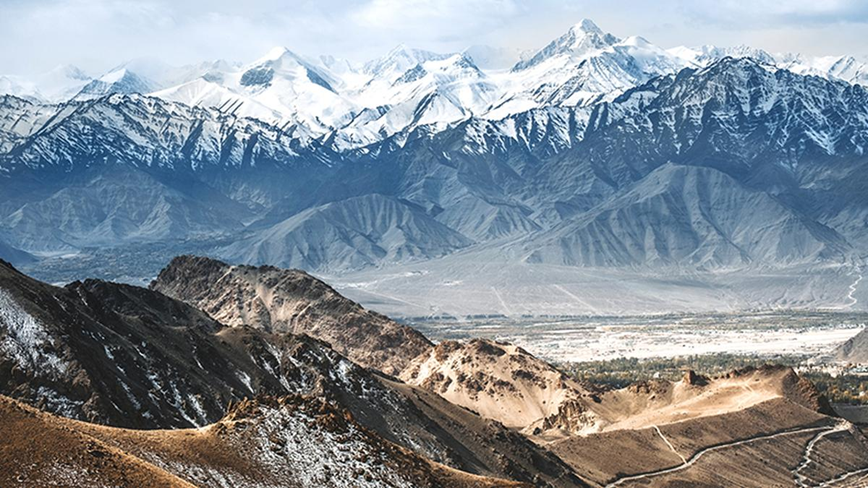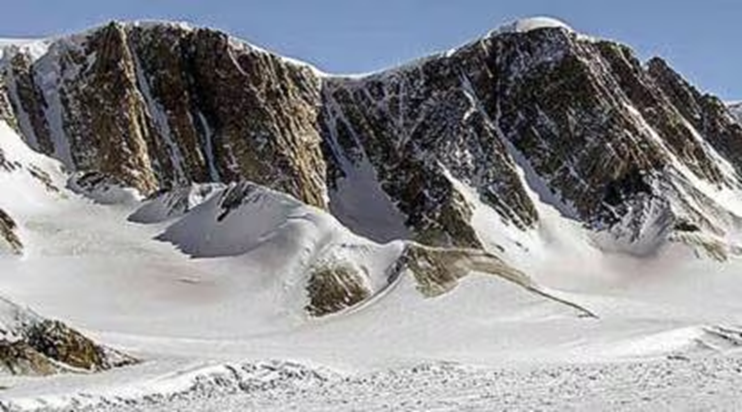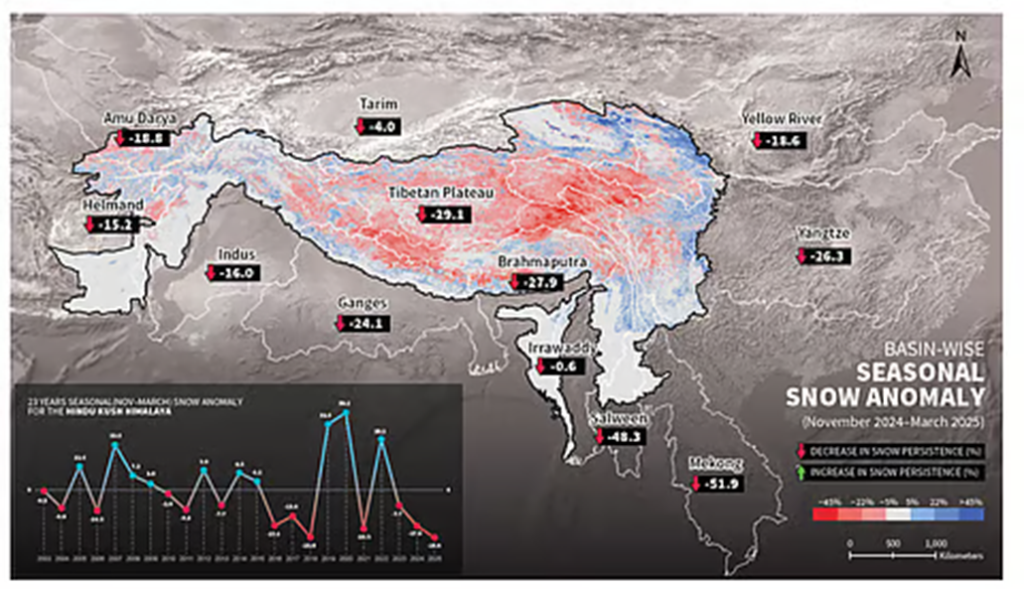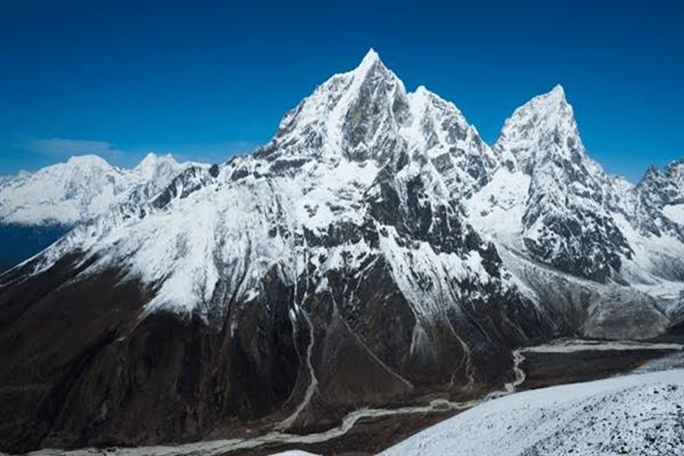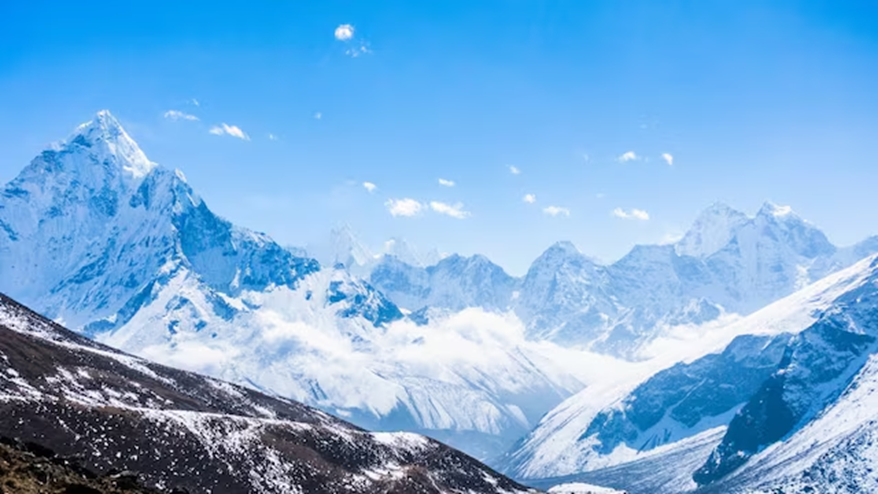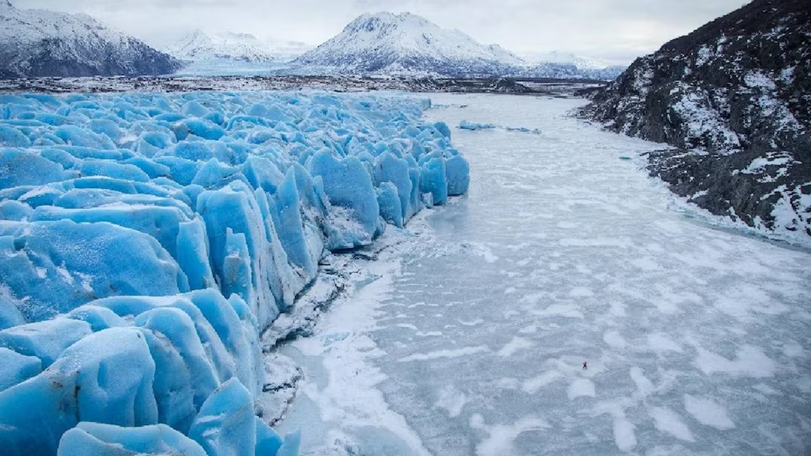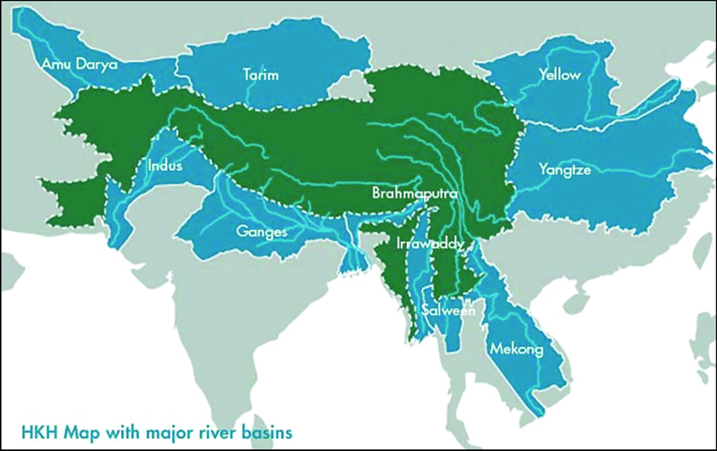Hindu Kush Himalaya (HKH) region, often referred to as the “Third Pole”, is crucial for its vast cryospheric reserves. According to the International Centre for Integrated Mountain Development (ICIMOD) 2025 Report, four out of the five most recent winters saw below-normal snow persistence. In winter 2024-25, snow cover fell to 23.6%, the lowest on record, sharply reducing summer meltwater supply.
Hindu Kush Himalaya (HKH) Region
Why In News
- Hindu Kush Himalaya (HKH) region, often referred to as the “Third Pole”, is crucial for its vast cryospheric reserves. According to the International Centre for Integrated Mountain Development (ICIMOD) 2025 Report, four out of the five most recent winters saw below-normal snow persistence. In winter 2024-25, snow cover fell to 23.6%, the lowest on record, sharply reducing summer meltwater supply.
Snow Persistence
- Snow persistence — or snow that usually stays on the ground between November and March — was 23.6 per cent below normal levels in the Hindu Kush Himalaya (HKH) region this year, a record low in the last 23 years.
Hindu Kush- Himalayan
- Hindu Kush-Himalayan range stretches across eight countries – Afghanistan, Bangladesh, Bhutan, China, India, Myanmar, Nepal, and Pakistan. These mountains hold the largest reserves of ice and snow outside the polar regions.
Snowfall Drops Across Hindu Kush- Himalayas
- According to the International Center for Integrated Mountain Development (ICIMOD), the region’s snow persistence – the duration snow stays on the ground – has dropped by 23.6% compared to normal levels. This marks the lowest snowfall observed in over two decades.
- “This trend, now in its third consecutive year, threatens water security for nearly two billion people,” the ICIMOD report stated, emphasizing the gravity of the situation.
- Reduced snow levels mean less meltwater feeding the twelve major river basins that countless communities rely on. These rivers, including the Ganges, Indus, and Brahmaputra, are vital arteries for drinking water, agriculture, and hydroelectric power.
Low Snowfall Weakens Rivers
- New Snow Update Report from ICIMOD paints a stark picture. Lower snowfall this year will likely lead to weaker river flows, deeper reliance on already strained groundwater supplies, and a heightened risk of droughts.
- Sher Muhammad, the lead author of the ICIMOD report, explained the unusual snowfall patterns. “This year the snowfall started late in January and remained low in the winter season on average,” he told AFP.
- This delay and reduction mean that spring and summer seasons will bring smaller and weaker rivers. Farmers depending on regular meltwater for irrigation could face catastrophic harvest losses. In cities, water shortages could become more frequent and severe.
- Several countries have already issued drought warnings, bracing for the compounded threats of heatwaves, water scarcity, and food insecurity.
Rivers Face Major Water Loss
- The loss of snow cover is not uniform across the Hindu Kush-Himalayas. Some areas are experiencing even sharper declines. The ICIMOD report highlights the Mekong and Salween river basins, which have lost nearly half of their snow cover. rivers are lifelines for millions in Southeast Asia, particularly in China and Myanmar. The drastic reduction in snow threatens the very foundation of agriculture, fisheries, and daily life in these regions.
- Without significant snow reserves to replenish them, the rivers will run lower, warmer, and less able to sustain the communities that depend on them. This will intensify competition over water resources and strain regional relationships already tested by climate stress.
Hindu Kush-Himalayas Face Irreversible Change
- Pema Gyamtsho, ICIMOD’s director general, did not mince words when discussing the long-term implications of current climate trends.
- “Carbon emissions have already locked in an irreversible course of recurrent snow anomalies in the HKH (Hindu Kush-Himalayas),” Gyamtsho said. sobering statement reflects a reality many scientists have warned about for years. Even if carbon emissions were to drop tomorrow, the effects already set in motion will continue to reshape the region’s environment for decades to come.
- Future generations in Asia will inherit a world with less snow, weaker rivers, and greater struggles for water.
Conclusion
- ICIMOD report is a wake-up call. The region must shift from reactive relief measures to proactive resilience-building. Only climate-resilient infrastructure, science-based policymaking, and transboundary cooperation can address the looming crisis.
